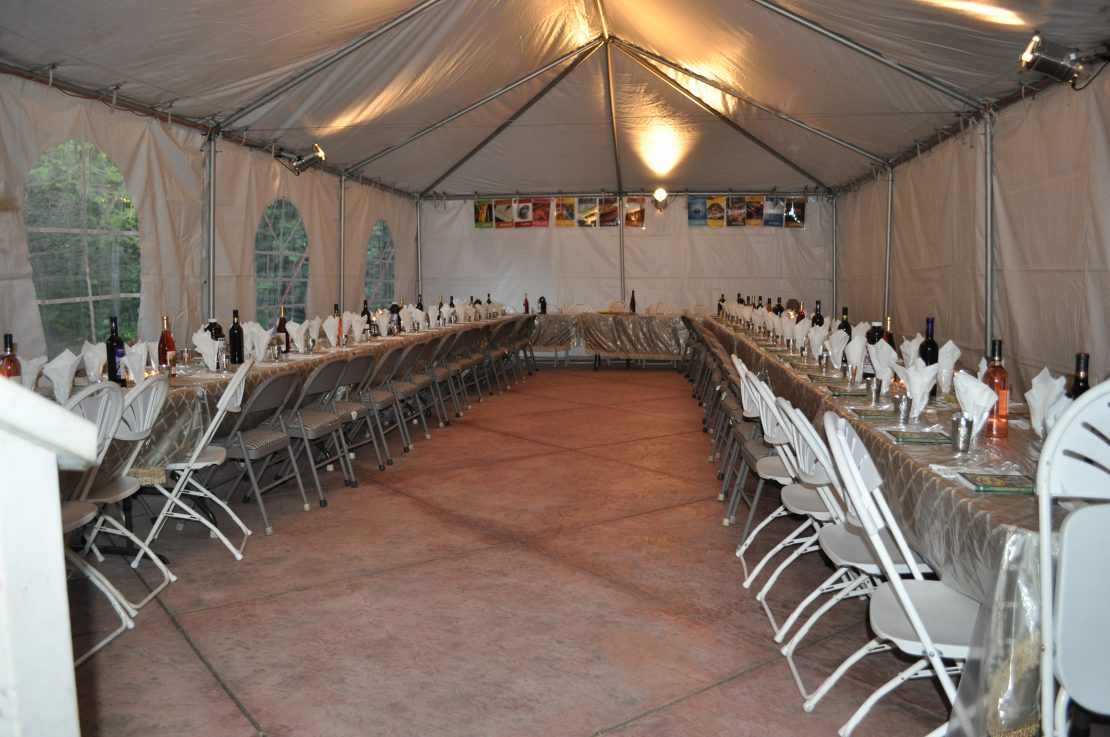Chabad centers are known for their open door policies. And Passover is no exception. But these seders can get large (we’re not even talking Kathmandu-large here), so how do Chabad rabbis keep the momentum going, keep the atmosphere intimate, and keep the people sipping, all the way to cup number four?
In a large white tent at the University of California Santa Cruz, Rabbi Shlomie Chein kicks off his seder by pointing to colorful posters that hang neatly behind his chair. He informs students that to reach the meal, they must complete 10 steps, downing wine, matzah and maror on the way. Letting participants know what to expect helps them avoid the potential ambiguity of mass seders. Invoking his children’s precocious “Ma Nishtana” and inviting his guests to share childhood memories ensures that at the end of this community seder, everyone savors the last cup of wine as family.
The first night is “formal,” for 100 guests: around 75 students attend the second seder, which is more interactive. “I ask students to read sections in different characters’ voices,” says the rabbi. “Or I have them act out selected parts using various accents. I give prizes to those who ask questions.” Students are encouraged to share a Pesach memory, a favorite story, or a family tradition: one student brings green onions to hit during “Dayenu,” a Persian custom. Another passes out a handmade songbook, including the hit, “Take Me Out to the Seder.”
“My prior seder experiences have always been with my family at home in Los Angeles, a mix of a Conservative and Reformed seder” shares Emma Geyer. At her campus Chabad, the junior can “fully immerse myself in a Jewish seder and experience something really beautiful and also very different.”
“The seder is so family-specific, the spice and flavor of it are unique to each place,” believes Esther Abramowitz. Together with her husband Rabbi Zalman, she is busy preparing their Chabad center in Fort Greene, Brooklyn for Passover. Like the Cheins, they incorporate their guests’ interests to ensure that “it feels like we are one family sitting around the seder table, instead of a massive community affair.” Kids get involved when the plague-themed toys and puppets hit the table. A regular, an Egyptian woman, recounts her own story of leaving that country. Once, an archaeologist arrived with Jewish antiquities, exploring the history of his finds with his tablemates.
Seven years ago, during their first seder, Mrs. Abramowitz rose to plate the holiday meal behind a partition in their shul. Unbeknownst to her, a visiting family also got up. To leave. “They had no idea that a meal was coming,” she laments. These days, the rabbi emails all guests ahead of time, encouraging them to eat a snack before coming and informing them that a full gourmet meal follows the Hagaddah reading.
Rabbi Moshe Feller, Director of Chabad-Lubavitch of the Upper Midwest, has been sharing his seder night birthday for more than half a century. In lieu of cake, the Minnesota rabbi broke matzah with Bob Dylan and former Mayor Rudy Giuliani (that at a memorable 1994 YMHA seder in Manhattan). These days, he tag-teams the evening with his son, Rabbi Mendel. “He speeds it up and I provide the color,” shares Rabbi Feller Sr. “People come because they see it’s genuine.”
His Lubavitch House in St. Paul offers 26 bedrooms, so guests can ignore the clock and spend the night. Rabbi Feller shares stories, many of which are classics he repeats each year, well past bedtime. For the more than hundred guests who attend his seder, many of them annuals as well, the reruns are a tradition in and of themselves.
Although he graduated in 2007, Uri Laio still treks back to the UCSC campus for Passover each year. Now the owner of Brassica and Brine, Laio recalls getting hooked in 2002 while helping out in the kitchen. “You see, my family is not very religious and we never kept Passover growing up, although my parents would make a seder or we would go to someone else’s,” Laio shares. “I was in charge of manually juicing the oranges for kosher-for-Passover orange juice that first year. Needless to say, the serious attention to detail, to make sure all the food was kosher for Passover, caught me by surprise and I was impressed.”
The thing that captivated him and kept him coming back, he says, was the difference: “My experience of the Pesach seders changed for me that year, from a passive experience to a transformative experience.”
And what is Passover without transformation?

Be the first to write a comment.